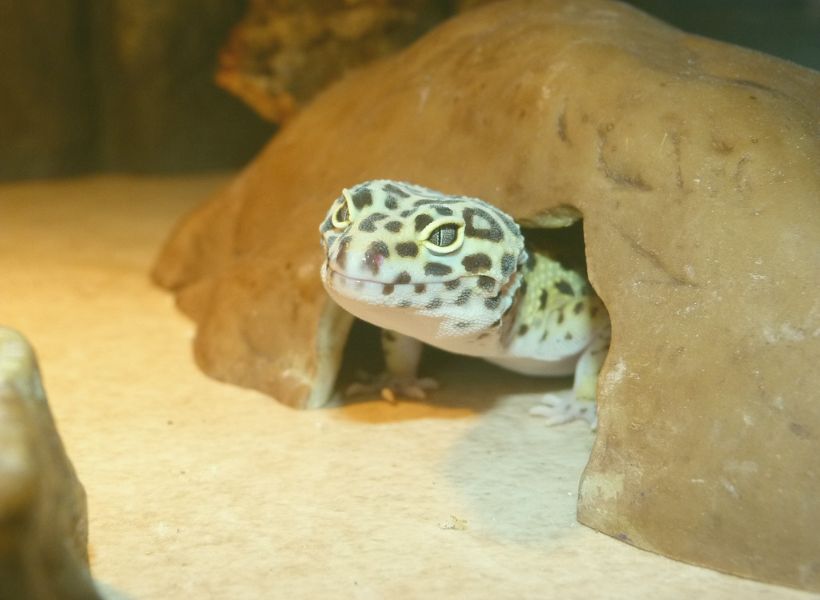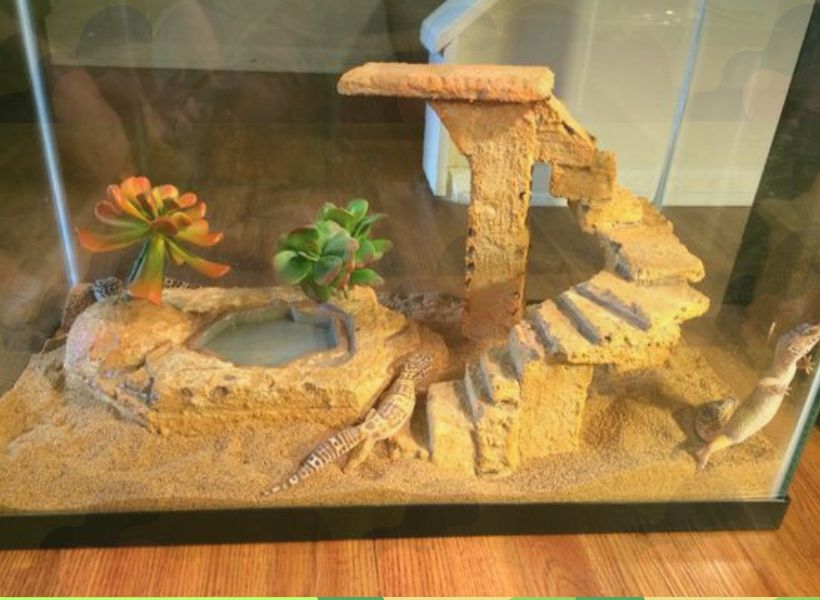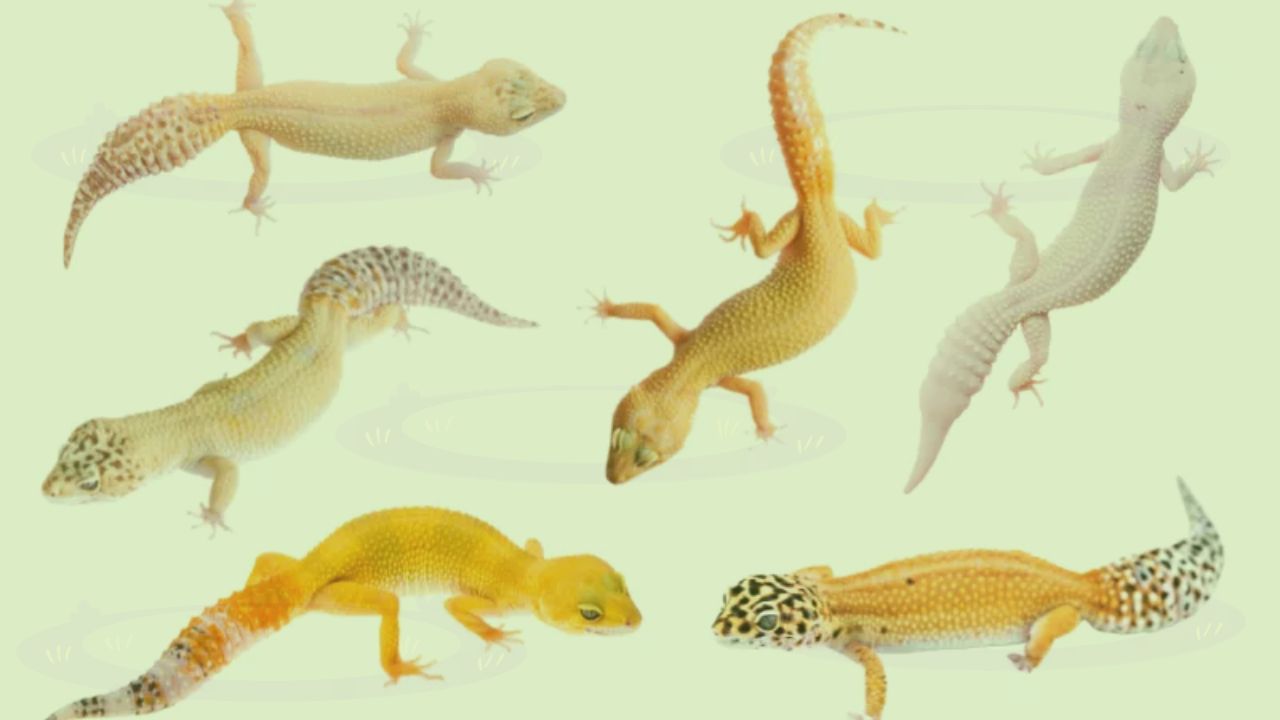Leopard gecko substrate mix, A blend of materials used as bedding for leopard geckos, the substrate mix offers a comfortable environment. It’s crafted to suit their natural habitat, providing warmth and a suitable texture for easy movement. A careful selection of materials ensures their health, making it an essential choice for a pet gecko.
What is the best substrate mix for leopard geckos? The optimal substrate mix for leopard geckos is important for their wellness. A good mix includes safe materials like coconut fiber, sand, and soil. This blend promotes proper burrowing and moisture control, mirroring their natural habitat. Always ensure the substrate is free from harmful chemicals and provides a comfortable environment for your geckos.

- Importance Of Choosing The Right Leopard Gecko Substrate Mix in enclosure
- What Is The Best Substrate For Leopard Geckos
- The Benefits Of Using A Substrate Mix Of Calcium Sand And Organic Topsoil
- The Benefits Of Using A Substrate Mix Of Calcium Sand And Organic Topsoil
- Creating The Perfect Ratio Of 70% Calcium Sand And 30% Organic Topsoil
- How To Prepare And Mix The Substrate For Leopard Geckos
- Maintaining Proper Humidity Levels With The Substrate Mix
- Monitoring And Cleaning The Substrate Regularly For Hygiene
- Understanding The Needs And Preferences Of Leopard Geckos
- Lookout Your Leopard Gecko’s Behavior And Health After Changing The Substrate Mix
- Common Mistakes To Avoid When Using Substrate Mix For Leopard Geckos
- FAQ About Leopard Gecko’s Substrate Mix
- Final Thought
Importance Of Choosing The Right Leopard Gecko Substrate Mix in enclosure
Setup the correct substrate mix and make it easy to clean for leopard geckos is important for their overall happiness and health.
The mix, often composed of elements like soil, sand, and coconut coir, replicates their native environment.
Perfect terrarium, excavator clay, and loose substrate in bioactive encourage natural behaviors, such as digging and burrowing.
A thoughtful selection supports foot health, moisture regulation, and a comfortable habitat.
Substrate Options For Leopard Geckos
When it comes to substrate options for leopard geckos, several choices are available.
These include materials like reptile carpets, paper towels, slate tiles, and a mix of soil, sand, and coconut coir. Each option has its benefits, catering to different preferences and needs.
Mixing Substrates For Gecko Habitat
Blending substrates for a gecko’s habitat involves combining materials like soil, sand, and coconut coir.
This mixture replicates their natural surroundings, offering comfort and opportunities for natural behaviors.
Carefully mixing substrates ensures a suitable environment that promotes the geckos.
Watch the video to know
What Is The Best Substrate For Leopard Geckos
This blend supports foot health, moisture regulation, and comfort. Always prioritize safety by avoiding substrates that can be ingested. The right substrate choice enhances the gecko’s overall well-being.
Selecting the optimal substrate for your loving pet leopard geckos as a responsible pet owner, and it’s important to have an optimal substrate. A mix of soil, sand, and coconut coir closely mimics their natural environment, exposing natural behaviors like burrowing.

The Benefits Of Using A Substrate Mix Of Calcium Sand And Organic Topsoil
Utilizing a substrate blend of calcium sand and organic topsoil comes with notable benefits.
This mix not only creates a terrain that mimics a leopard gecko’s natural habitat but also offers a calcium source, essential for their bone health.
The combination provides a comfortable surface for movement and supports their natural behaviors.
To maintain proper moisture levels and cleanliness. This substrate mix can contribute to the wellness of your leopard gecko.
Calcium Sand: Its Role In Providing Essential Calcium For Leopard Geckos
Calcium sand supplies essential calcium for leopard geckos. This substrate not only offers a comfortable surface but also serves as a source of dietary calcium when ingested during hunting or exploration. Ensuring proper calcium intake supports strong bones and overall health.
Organic Topsoil: Why It Is A Suitable Choice For Leopard Gecko Substrate
Organic topsoil stands as a suitable choice for leopard gecko substrate due to its natural composition.
This substrate for a leopard gecko fosters a habitat akin to their native environment, encouraging burrowing and digging behaviors. With its moisture-retaining properties, it helps maintain the required humidity levels.

The Benefits Of Using A Substrate Mix Of Calcium Sand And Organic Topsoil
Utilizing a substrate blend of calcium sand and organic top soil comes with notable benefits. This mix not only creates a terrain that mimics a leopard gecko’s natural habitat but also offers a calcium source, essential for their bone health.
The combination provides a comfortable surface for movement and supports their natural behaviors. To maintain proper moisture levels and cleanliness. This substrate mix can contribute to the wellness of your leopard gecko.
Calcium Sand: Its Role In Providing Essential Calcium For Leopard Geckos
Calcium sand supplies essential calcium for leopard geckos. This substrate not only offers a comfortable surface but also serves as a source of dietary calcium when ingested during hunting or exploration. Ensuring proper calcium intake supports strong bones and overall health.
Organic Topsoil: Why It Is A Suitable Choice For Leopard Gecko Substrate
Organic topsoil stands as a suitable choice for leopard gecko substrate due to its natural composition.
This substrate for a leopard gecko fosters a habitat akin to their native environment, encouraging burrowing and digging behaviors. With its moisture-retaining properties, it helps maintain the required humidity levels.
Creating The Perfect Ratio Of 70% Calcium Sand And 30% Organic Topsoil

Crafting the ideal ratio of 70% calcium sand and 30% organic topsoil can provide a balanced substrate mix for your leopard gecko.
This blend offers the benefits of both components—calcium supply for bone health and a natural environment for burrowing.
The sand contributes to texture, while the topsoil maintains moisture. Regular monitoring and adjustment ensure a safe habitat for your gecko’s good health.
Substrate Composition For Leopard Gecko
A blend of materials like soil, sand, and coconut coir often mirrors their natural habitat. This mix supports their comfort and facilitates behaviors like burrowing.
Selecting the right composition creates an environment where your gecko can thrive and exhibit its natural instincts.

How To Prepare And Mix The Substrate For Leopard Geckos
Preparing mixing substrate for leopard geckos involves simple steps. Combine elements like soil, sand, and coco fiber in a ratio that imitates their natural environment.
Thoroughly blend the components to ensure an even distribution. Add water to achieve the right moisture level, which aids in shedding and humidity control. Assess and adjust the mixture to maintain a comfortable habitat.
Maintaining Proper Humidity Levels With The Substrate Mix
The combination of materials like soil, sand, and coconut coir helps retain moisture naturally. Regularly misting the enclosure can further enhance humidity.
Monitoring the habitat’s humidity gauge ensures it stays within the gecko’s required range. Proper humidity aids in shedding and breathing properly.
Monitoring And Cleaning The Substrate Regularly For Hygiene
Regular monitoring and cleaning of the substrate are important for maintaining a hygienic habitat for your leopard gecko. Remove waste and uneaten food promptly to prevent bacterial growth.
Spot-clean the enclosure regularly and perform a full substrate change periodically.
Monitoring the substrate’s condition and your gecko’s behavior helps ensure a clean and healthy environment, promoting your pet’s health and wellness.
Understanding The Needs And Preferences Of Leopard Geckos
Gaining insight into the requirements and preferences of leopard geckos is key. These creatures thrive in habitats that mirror their natural surroundings, where they can engage in behaviors like burrowing and climbing.
Providing proper temperatures, humidity levels, and suitable substrate is essential. A varied diet rich in insects caters to their nutritional needs.
Observing their behavior and responding to their cues helps create an environment where leopard geckos can lead healthy, content lives.


Lookout Your Leopard Gecko’s Behavior And Health After Changing The Substrate Mix
After altering the substrate mix in your leopard gecko’s enclosure, it’s important to observe their behavior and health. Keep an eye out for any signs of stress or discomfort, such as excessive hiding or unusual activity.
Ensure they’re still eating and drinking as usual. Monitoring their skin condition and regularity of shedding is also important.
Any sudden changes warrant attention, and adjusting the environment accordingly promotes your gecko’s well adaptation to the new substrate.
Common Mistakes To Avoid When Using Substrate Mix For Leopard Geckos
Choosing the wrong substrate, that can be ingested and cause impaction. Make sure the substrate isn’t overly damp, preventing respiratory issues. Also, refrain from using substrates with sharp particles that can harm your gecko’s skin.
Regular cleaning is essential; neglecting waste removal can lead to bacterial growth. By sidestepping these errors, you’ll create a safe and comfortable environment for your gecko to thrive.
FAQ About Leopard Gecko’s Substrate Mix
What Is The Best Substrate Mix For Leopard Geckos?
The optimal substrate mix for leopard geckos often combines soil, sand, and coconut coir. This blend emulates their native environment, offering comfort and promoting natural behaviors. Selecting the right mix is vital for a healthy and content pet gecko, ensuring they have a suitable habitat to thrive in.
How Do You Make Leopard Gecko Substrate Mix?
Creating a leopard substrate mix is straightforward. Combine soil, sand, and coconut coir in a 2:1:1 ratio for a balanced blend. Thoroughly mix the components, adding a bit of water to achieve desired moisture levels. Regularly check and adjust as needed. This mix provides a comfortable and engaging environment for your gecko.
How Do You Make Homemade Gecko Substrate?
To craft homemade gecko substrate, mix equal parts of organic topsoil and play sand. Blend them well to ensure an even distribution. Add water gradually to reach the desired moisture level, which aids in shedding. This simple DIY substrate offers a cost-effective and comfortable habitat for your gecko to thrive in.
Can Leopard Geckos Have Dirt Substrate?
Yes, leopard geckos can have a dirt substrate, provided it’s safe and appropriate. A mix of organic topsoil, sand, and coconut coir can mimic their natural habitat. This substrate enables burrowing and maintains proper humidity levels. Always ensure the substrate isn’t ingested and monitor its cleanliness for your gecko’s well-being.
Final Thought
Leopard gecko substrate mix involves ensuring the popper environment of your leopard gecko involves thoughtful consideration of its habitat, including the substrate mix. Replicating their natural environment with proper materials and ratios is key.
Prioritize factors like comfort, humidity, and cleanliness. Regular monitoring of your gecko’s behavior and health will guide you in making necessary adjustments.
By attentively catering to their needs, you’ll create an environment where your leopard gecko can lead a happy and healthy life.





Leave a Reply